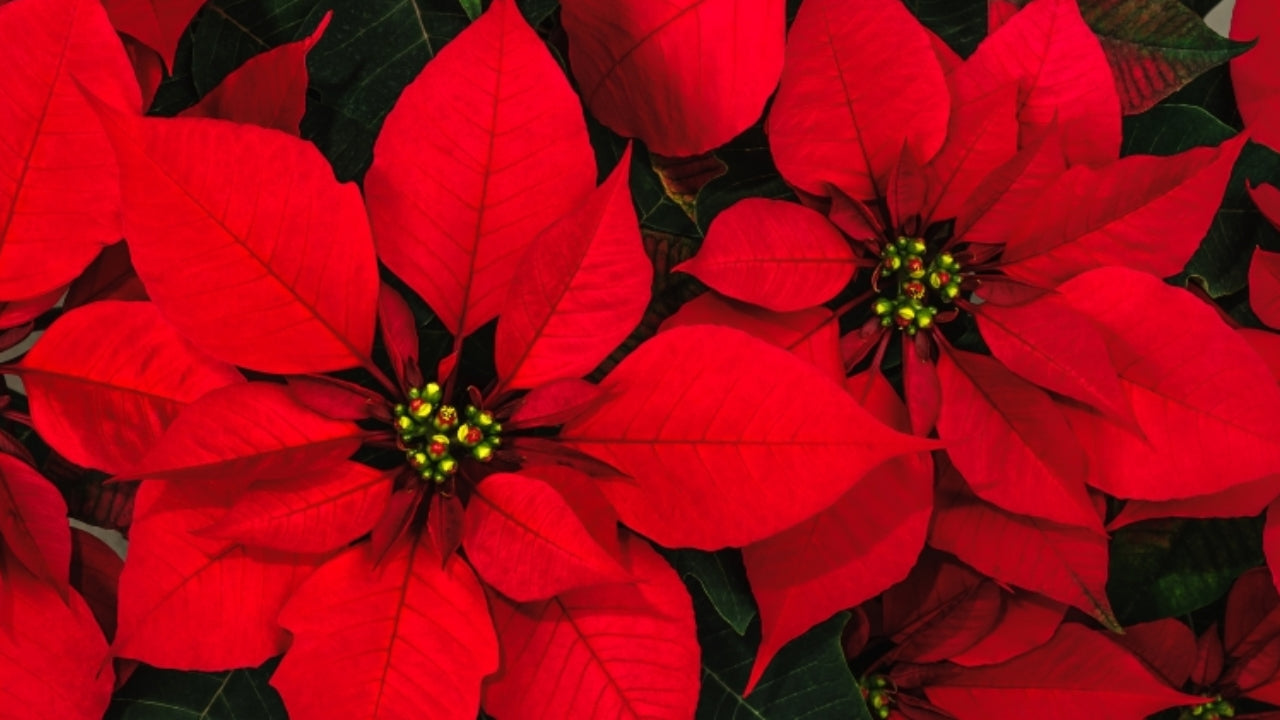- Poinsettias are the most popular Christmas plant. Most Poinsettias are sold within a six-week period leading up to that holiday, representing some $60 million worth.
- The showy colored parts of Poinsettias that most people think of as the flowers are actually colored bracts (modified leaves). The yellow flowers, or cyathia, are in the center of the colorful bracts. The plant drops its bracts and leaves soon after those flowers shed their pollen. For the longest-lasting Poinsettias, choose plants with little or no yellow pollen showing.
- The colors of the bracts are created through "photoperiodism", meaning that they require darkness (12 hours at a time for at least five days in a row) to change color. On the other hand, once Poinsettias finish that process, the plants require abundant light during the day for the brightest color.
- Poinsettias are not really poisonous. A study at Ohio State University showed that a 50-pound child would have to eat more than a pound-and-a-quarter of Poinsettia leaves (500 to 600 leaves) to have any side effects. The most common side effects that have been reported from Poinsettia ingestions are upset stomach and vomiting. The leaves are reportedly not very tasty, so it's highly unlikely that kids or even pets would be able to eat that many!
- Many plants in the Euphorbiaceae family ooze a milky sap. Some people with latex allergies have had a skin reaction (most likely to the sap) after touching the leaves. If you are latex sensitive GO Medical provides a full selection of latex free products.
- So if you don't eat them or hug them most of us should be just fine!
May you and your loved ones have a Merry Christmas with or without poinsettias!!


